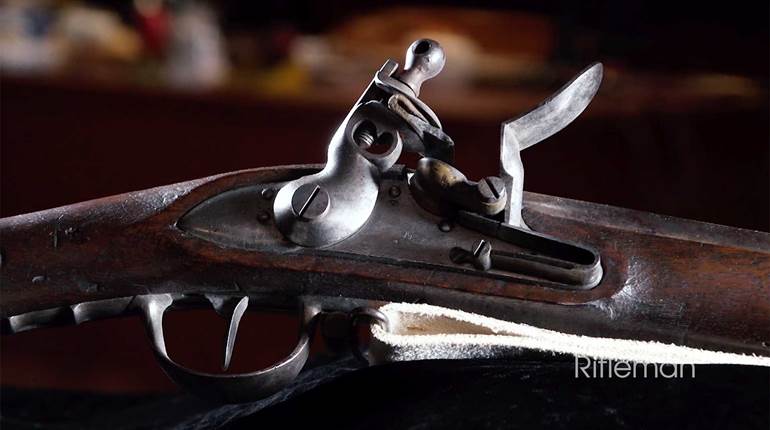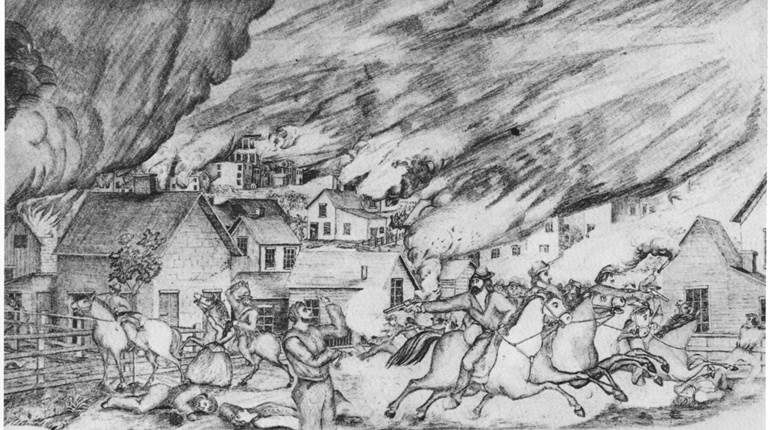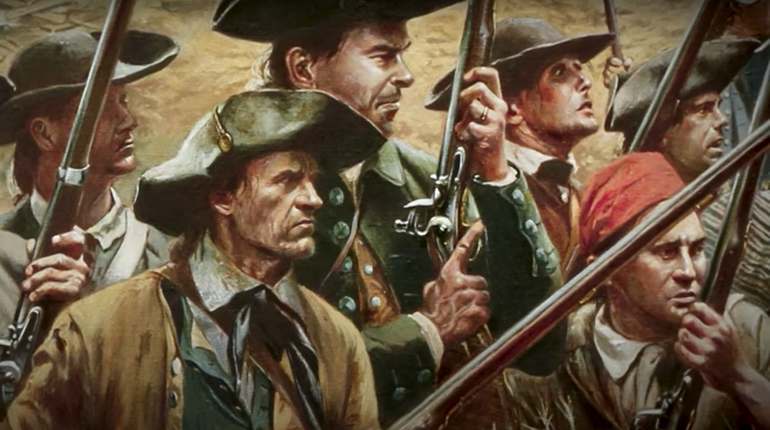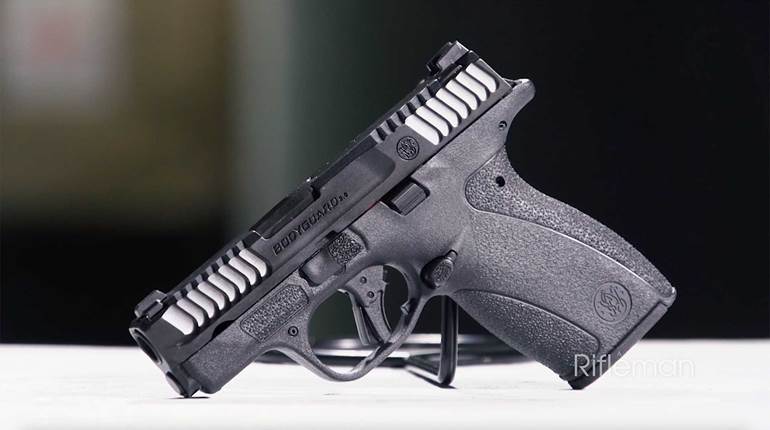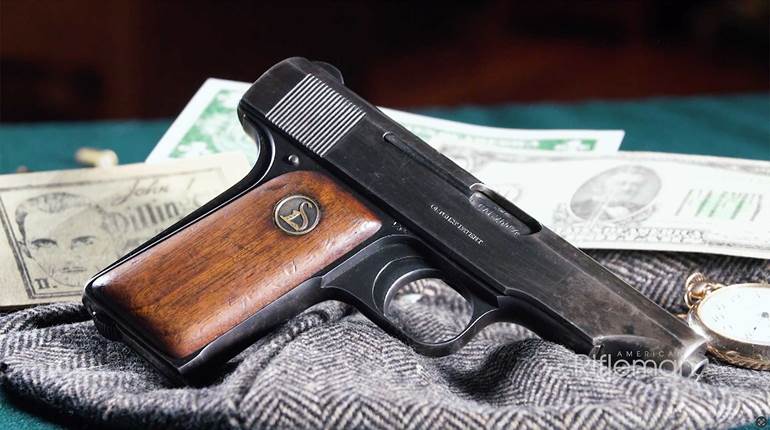
The Blakeslee cartridge box (above) was tailor-made for reloads of the seven-shot’s rimfire cartridges.

Mid-nineteenth century America was an age of inventors, and compulsive tinkerer Christopher Miner Spencer was one of its most prolific. He never accumulated great wealth as did gun titans Oliver Winchester, Samuel Colt, Horace Smith and Daniel Baird Wesson, but throughout his long life Spencer’s fertile mind came up with a dizzying assortment of devices. In addition to the repeating rifle that bore his name, these included a machine that automated turning spindles and bobbin heads used in building sewing machines, an automatic silk-winding machine, an automatic turret lathe, a pump-action shotgun and a horseless carriage powered by a boiler with tubes made from factory-reject rifle barrels. Today the names Winchester, Colt and Smith & Wesson bring guns to mind, while only historians and firearm aficionados know of the Spencer repeating rifle and the boyishly ebullient Connecticut Yankee who designed it. Yet Spencer’s genius made itself felt on Civil War battlefields and furthered the automation of American industry.
At harvest time, Josiah Hollister had a simple chore for his grandson: Take a load of potatoes to town and sell them. Then come home.
Although not yet a teenager in the early 1840s, Christopher Miner Spencer was up to the task. And he would do his best, at least in part because he respected his 88-year-old grandfather, who had told him at length of his service in the American Revolution. In fact, Hollister had told everyone about it, and with understandable pride, not just because he was a veteran of what all saw as a glorious struggle for independence, but because he had personally known George Washington as his commander. Hollister claimed to have built, with his own hands, a tall wooden wardrobe for Martha Washington’s clothes (he called her “Lady Washington”). People said she delighted in it, and he always delighted in talking about it.

The old man’s affinity for crafting and refining physical objects had long been recognized. While one account credits Hollister with good marksmanship, his main contribution to the fight for independence was something entirely different. Twenty years old when the Declaration of Independence was signed, the straight-spined, active, strong and ambitious Josiah Hollister had joined the cause as an “artificer,” someone who could create and then fix anything that required fixing, from wagons to equipment the soldiers needed to battlements and even to making tents and clothing. Under the immediate command of French and Indian War veteran Jeduthan Baldwin, who had shown engineering talent during the siege of Boston, Pvt. Hollister summoned his craftsman’s gifts in aid of the army dedicated to breaking the British hold on his homeland. With his fellow artificers, Hollister served in several places, including Valley Forge, where he had time to create Martha Washington’s wardrobe. When the war ended, Hollister came home to Connecticut, settled down on a farm, got married and began a family. He would eventually father 13 children by two wives.
Spencer, whose childhood nickname was “Crit,” had come to live on his grandfather’s farm at the age of 11. His parents and siblings lived in town a short distance away, so exactly why he was to spend a few years with his grandfather is not completely clear, though it was probably to help out the old man, whose second wife (Crit’s maternal grandmother) died at the age of 80 in early June 1844. There is no evidence of serious family strife, and Crit’s father, Ogden, a successful man in the wool business, was far from poor. It appears that the family may also have wanted Hollister to teach Crit something about farming. Although the man was old, he had sharp eyes and ears, and his memory was clear. He could look after Crit.

The Hollister farm was just outside Manchester, a town several miles due east of Hartford and not far from where the old man was born in an era far different from the boom years that followed. Originally Podunk Indian territory, the area was settled by Puritans who made it a farming community during the century that led up to the Revolution. By the mid-1840s Manchester was home to a half-dozen paper mills, two gunpowder mills, five woolen mills, two cotton mills and two silk mills, as well as some other manufacturing enterprises. Industry had come in earnest. The mills, powered by water flowing along several brooks and the Hockanum River, which itself flowed into the long, languid Connecticut River, were expanding, while new ones were being built. Their wheels turned machinery that made an increasing variety of products, from glass to lumber to the town’s traditional textiles. The growth of business in Manchester meant that neighboring farms had a healthy market for their produce. Hence Crit Spencer’s potato-selling trip to town.
Once Hollister’s potatoes were sold and the money was safely pocketed, Crit started on the journey back to his grandfather’s farm. Then the boy saw something novel moving through town, a colorful procession on its way to a hastily erected complex unlike the staid Manchester’s mills or other supremely functional buildings. The circus had arrived, meant for pure fun and soon to vanish. The parade heading toward the tents was exciting, awe-inspiring and alluring to everyone, especially children and perhaps especially Crit—a boy with an abiding curiosity about new things, functional and otherwise. He convinced himself that his grandfather wouldn’t mind if he watched for a bit.
A growing crowd followed the parade, sweeping up Crit Spencer as it went until it stopped at the tents. There, hawkers’ cries and other sounds and sights unlike anything else in the industrializing town enticed many to become part of the experience. His grandfather didn’t need him immediately, Crit reasoned. There was plenty of time before he had to return to the farm, so why not take advantage of the moment and explore the wondrous offerings now before him? The sun had set by the time the boy started for home. Crit had spent more than hours at the circus; he had also spent potato money—not all of it, but enough to convince Hollister not to entrust his grandson with another errand like that anytime soon.

Crit’s costly circus detour would be but a small bump in the relationship he had with Josiah Hollister. Grandson and grandfather—nearly eight decades apart in age—were bound together by more than just blood and build. Although Crit would never be as tall as his grandfather—he reached 5'5" by adulthood—they both retained lean but hardy physiques throughout their lives. They shared an interest in building things and in making other things work better. They had a knack for it, perhaps even a passion, for when his mind focused on such tasks, Crit could not be diverted, as he had been with the circus.
By the time Crit Spencer went to live with his grandfather, the ranks of Revolutionary War fighters had dwindled to an honored few. During the brief period he lived under Hollister’s roof—only a handful of years—Spencer devoted himself to the art of woodworking. His grandfather’s reluctance to send him on more potato-selling missions did not keep him from trusting the boy to use an old foot lathe at the farm. And use it he did, regularly and often, so much so that his Aunt Harriet thought the boy’s time should be spent on other, more productive activities. Better to chop wood, she would say, or do something practical rather than turn out fancy but useless things in wood. Hollister disagreed. He saw something worthwhile in Crit’s labors, or at least a potential.
“Let the boy alone,” he told Harriet, “and he may make something yet.”
It could have been his grandfather’s tutelage that helped inspire Crit, or perhaps inventiveness and industry were in his genes, and not just from the Hollister line. The Spencers claimed as an ancestor a respected furniture maker who had crossed the Atlantic as part of the Great Migration in the 1600s. Chairs built by Thomas Spencer were known for their sturdiness and pleasing lines. For decades his descendants would carry on the tradition. Crit was interested in more than wood. Firearms lured him, too, and when Hollister eventually turned over to him the flintlock musket that the old man had carried in the Revolution, the boy decided to improve it. Like most shoulder arms of the day, the gun’s barrel was long—too long, as far as Crit was concerned—so he decided to fix it. Lacking the right tool for the task, the boy made his own. After taking a large knife from its sheath, he hacked grooves into its blade with an axe to create a crude saw. The now-serrated blade’s metal was strong enough—and so was the boy—to lop off a section of the barrel. In Crit’s mind, this made the weapon appealingly modern. His grandfather’s reaction to the surgery performed on his musket is not recorded.
Josiah Hollister lived another five years beyond the summer of 1844. His longevity provided a crucial connection between the war that had given birth to the United States and the war that would tear it apart. Though he would not live to see it, his mentorship of Crit would aid the country in a conflict as monumental as the one in which he had served.
Editor’s note: The preceding, excerpted from Gun Barons by John Bainbridge, Jr., is but part of the story of Christopher Spencer, who is one of many other famous firearm inventors profiled in the new book subtitled, The Weapons That Transformed America And The Men Who Invented Them. It is reprinted here by permission of St. Martin’s Press.












